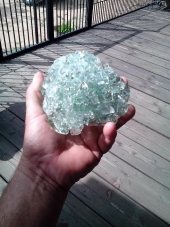




Gardens in my mind never need water
Castles in the air never have a wet basement
Well made buildings are fractal -- equally intelligent design at every level of detail.
Bright sparks remind others that they too can dance
What I am looking for is looking for me too!

 2
2




Mike Jay wrote:Great work Josiah! Nice summary and helpful hints for the next time. Have fun on your journeys in the meantime
Permaculture...picking the lock back to Eden since 1978.
Pics of my Forest Garden




 3
3




You can follow my latest adventures at
https://www.unclemud.com
https://www.youtube.com/unclemud
https://permies.com/u/164246/Chris-McClellan
Buy my stuff at https://unclemud.com/store/
 2
2




 4
4




Just fermenting and being fermented by life
 2
2




Josiah Kobernik wrote:why indeed is there no glass recycling in Western Montana?
My tree nursery: https://mountaintimefarm.com/
 3
3












-Nathanael




Trace Oswald wrote:I have a bunch of fresnel lens sitting around waiting to be used for something. You can get very large ones for free nearly every day. Just go to Craigslist free stuff and look for projection TV's. No one wants them anymore because the quality isn't good and they are huge, but the fresnel lens is right on the front and very easy to remove. I heard of a guy that took one out, leaned it up against his garage in the sun, and burned his garage down, so be careful.
Craigslist today in Minneapolis:
Other people may reject you but if you lie in the forest floor for long enough the moss and fungi will accept you as one of their own!




No rain, no rainbow.








 1
1




 1
1




 1
1












Perpetual Growth Regenerative Horticulture. Grow in peace.

|
Let's get him boys! We'll make him read this tiny ad!
Rocket Mass Heater Resources Wiki
https://permies.com/w/rmh-resources
|






